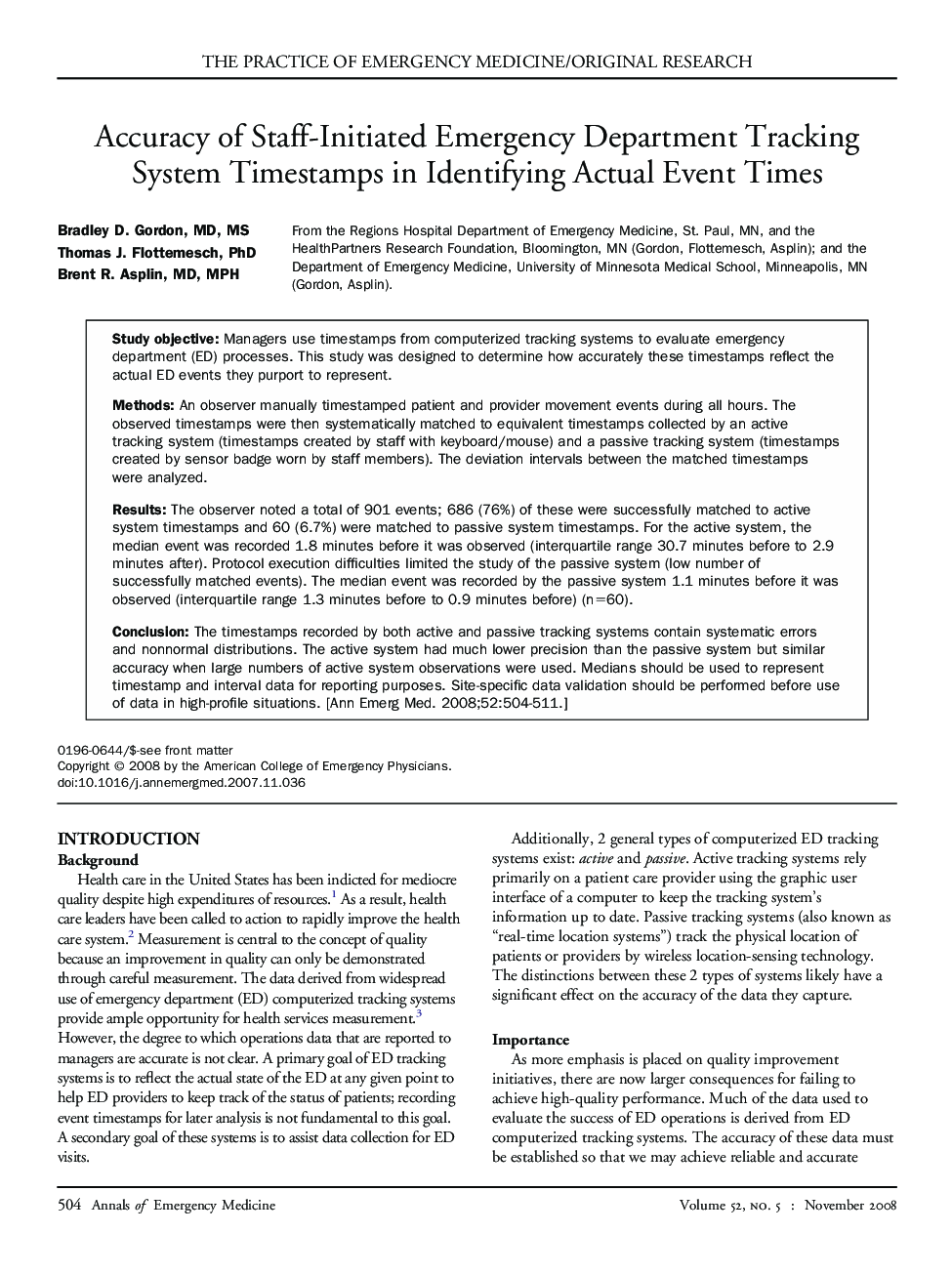| Article ID | Journal | Published Year | Pages | File Type |
|---|---|---|---|---|
| 3232577 | Annals of Emergency Medicine | 2008 | 8 Pages |
Study objectiveManagers use timestamps from computerized tracking systems to evaluate emergency department (ED) processes. This study was designed to determine how accurately these timestamps reflect the actual ED events they purport to represent.MethodsAn observer manually timestamped patient and provider movement events during all hours. The observed timestamps were then systematically matched to equivalent timestamps collected by an active tracking system (timestamps created by staff with keyboard/mouse) and a passive tracking system (timestamps created by sensor badge worn by staff members). The deviation intervals between the matched timestamps were analyzed.ResultsThe observer noted a total of 901 events; 686 (76%) of these were successfully matched to active system timestamps and 60 (6.7%) were matched to passive system timestamps. For the active system, the median event was recorded 1.8 minutes before it was observed (interquartile range 30.7 minutes before to 2.9 minutes after). Protocol execution difficulties limited the study of the passive system (low number of successfully matched events). The median event was recorded by the passive system 1.1 minutes before it was observed (interquartile range 1.3 minutes before to 0.9 minutes before) (n=60).ConclusionThe timestamps recorded by both active and passive tracking systems contain systematic errors and nonnormal distributions. The active system had much lower precision than the passive system but similar accuracy when large numbers of active system observations were used. Medians should be used to represent timestamp and interval data for reporting purposes. Site-specific data validation should be performed before use of data in high-profile situations.
